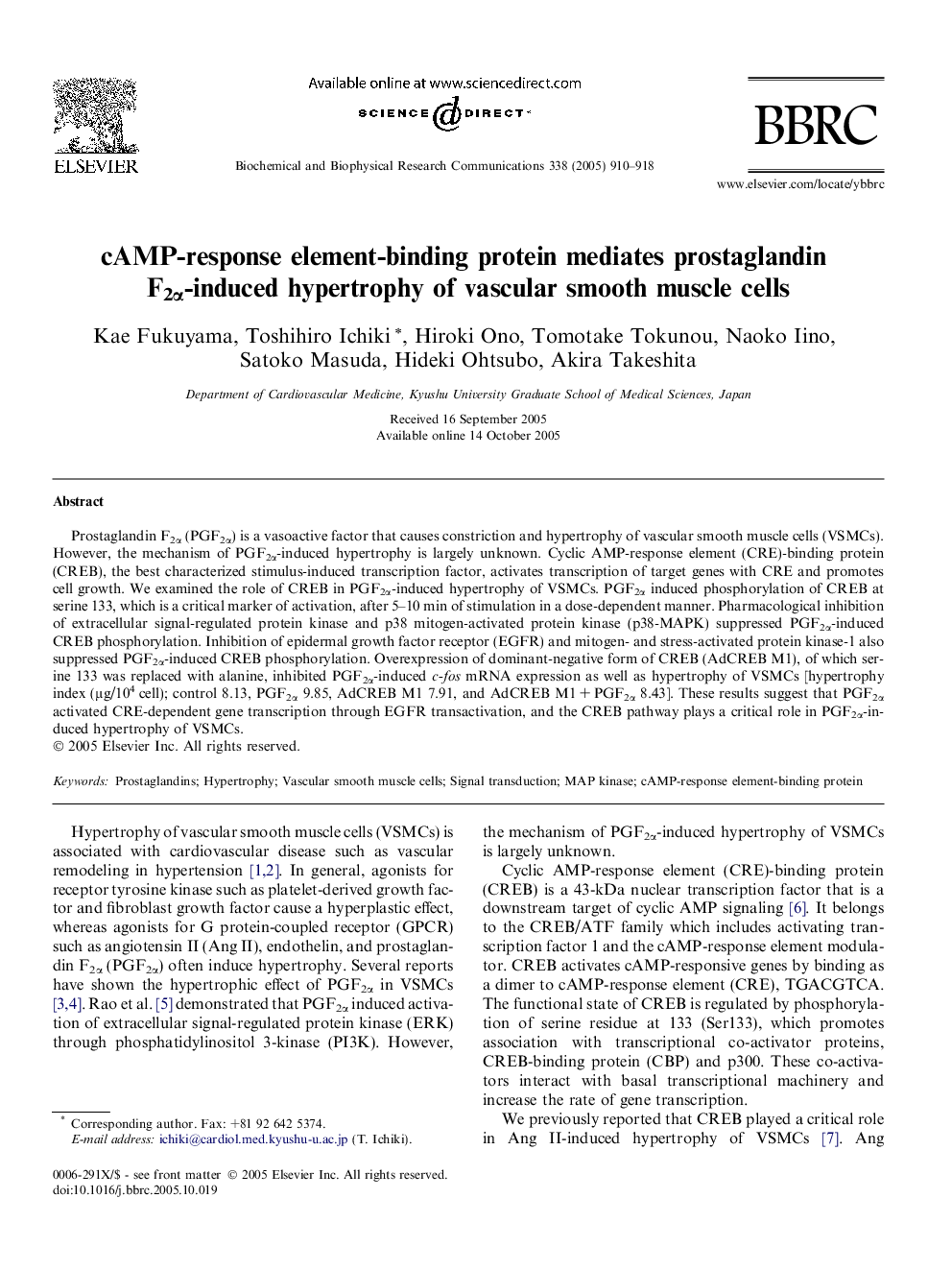| Article ID | Journal | Published Year | Pages | File Type |
|---|---|---|---|---|
| 10767885 | Biochemical and Biophysical Research Communications | 2005 | 9 Pages |
Abstract
Prostaglandin F2α (PGF2α) is a vasoactive factor that causes constriction and hypertrophy of vascular smooth muscle cells (VSMCs). However, the mechanism of PGF2α-induced hypertrophy is largely unknown. Cyclic AMP-response element (CRE)-binding protein (CREB), the best characterized stimulus-induced transcription factor, activates transcription of target genes with CRE and promotes cell growth. We examined the role of CREB in PGF2α-induced hypertrophy of VSMCs. PGF2α induced phosphorylation of CREB at serine 133, which is a critical marker of activation, after 5-10 min of stimulation in a dose-dependent manner. Pharmacological inhibition of extracellular signal-regulated protein kinase and p38 mitogen-activated protein kinase (p38-MAPK) suppressed PGF2α-induced CREB phosphorylation. Inhibition of epidermal growth factor receptor (EGFR) and mitogen- and stress-activated protein kinase-1 also suppressed PGF2α-induced CREB phosphorylation. Overexpression of dominant-negative form of CREB (AdCREB M1), of which serine 133 was replaced with alanine, inhibited PGF2α-induced c-fos mRNA expression as well as hypertrophy of VSMCs [hypertrophy index (μg/104 cell); control 8.13, PGF2α 9.85, AdCREB M1 7.91, and AdCREB M1 + PGF2α 8.43]. These results suggest that PGF2α activated CRE-dependent gene transcription through EGFR transactivation, and the CREB pathway plays a critical role in PGF2α-induced hypertrophy of VSMCs.
Keywords
Related Topics
Life Sciences
Biochemistry, Genetics and Molecular Biology
Biochemistry
Authors
Kae Fukuyama, Toshihiro Ichiki, Hiroki Ono, Tomotake Tokunou, Naoko Iino, Satoko Masuda, Hideki Ohtsubo, Akira Takeshita,
